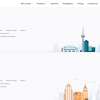Even though Responsive Display Ads are the default choice when generating a new Display ad in Google Ads, advertisers are still hesitant to use them. However, like with anything related to automation, our arms are rapidly being twisted to embrace them if we want to ensure maximum account performance.
So, what are the advantages of Responsive Display Ads, and why can’t advertisers afford not to use them?
What Are the Benefits of Responsive Display Ads?
While most marketers are drawn to RDAs because of the time and resource savings they provide, one benefit that is often overlooked is their high conversion rates. While using RDAs does not guarantee a higher Conversion Rate for your Display advertisements, more and more advertisers are reporting on seeing it occur in their accounts.
I’ve witnessed a significant improvement in the performance of Display Campaigns since using RDAs as an ad option with Image Ads.
So, what’s going on here? It’s a combination of factors:
- Greater reach — Because RDAs may fit in any ad size, advertisers get a lot more chances to see their advertising than they would with fixed-size Image Ads. The greater the number of Impressions, the greater the number of opportunities for Clicks, and hence the greater the chances of a Conversion.
- RDAs take precedence over Image Ads on Google – While there is no ‘official’ confirmation, numerous real-life testimonies suggest that this is the truth. If you don’t have an RDA alternative that you can use to compete for placement, an advertiser who does have RDA variation is more likely to be chosen.
- Machine Learning Optimizations — Based on your performance history, asset content, and who your campaign is targeting, Google’s Machine Learning will choose the optimum ad combination in real-time, choosing an ideal mix of assets.
Your Next Three Steps
What should you do now that you’ve decided it’s time to add Responsive Display Ads to your PPC strategy?
1. To test against Image Ads, create RDAs
It’s never been a better time to get into your account and start adding RDAs to your existing Display Campaigns. When it comes to generating your ad, the RDA setup gives a lot of valuable information. Make sure to fill out all of the fields, and keep an eye on the Ad Strength bar for suggestions on what more assets you should add.
2. Evaluate the effectiveness of different ad formats
Examine the differences in performance between your RDAs and Image Ads once you’ve gathered enough data. As your RDAs open up additional placement choices that Image Ads alone couldn’t provide, you should be witnessing an increase in Impressions by now.
3. Purchase your Hero Conf London ticket.
At Hero Conf London in July, I’ll be talking about the dos and don’ts of RDAs, as well as what you can do to improve your performance. This will cover things like how to have the most control over the appearance of your advertising, how to choose your text assets, and how to choose your graphics.
Last Thoughts
While RDA reporting data is limited, for example, you cannot see the exact ad mix that resulted in a Conversion, RDAs’ bottom-line performance is difficult to ignore. With no effort after ad production, simply adding an RDA to your existing Display ads will boost campaign reach and effectiveness.





